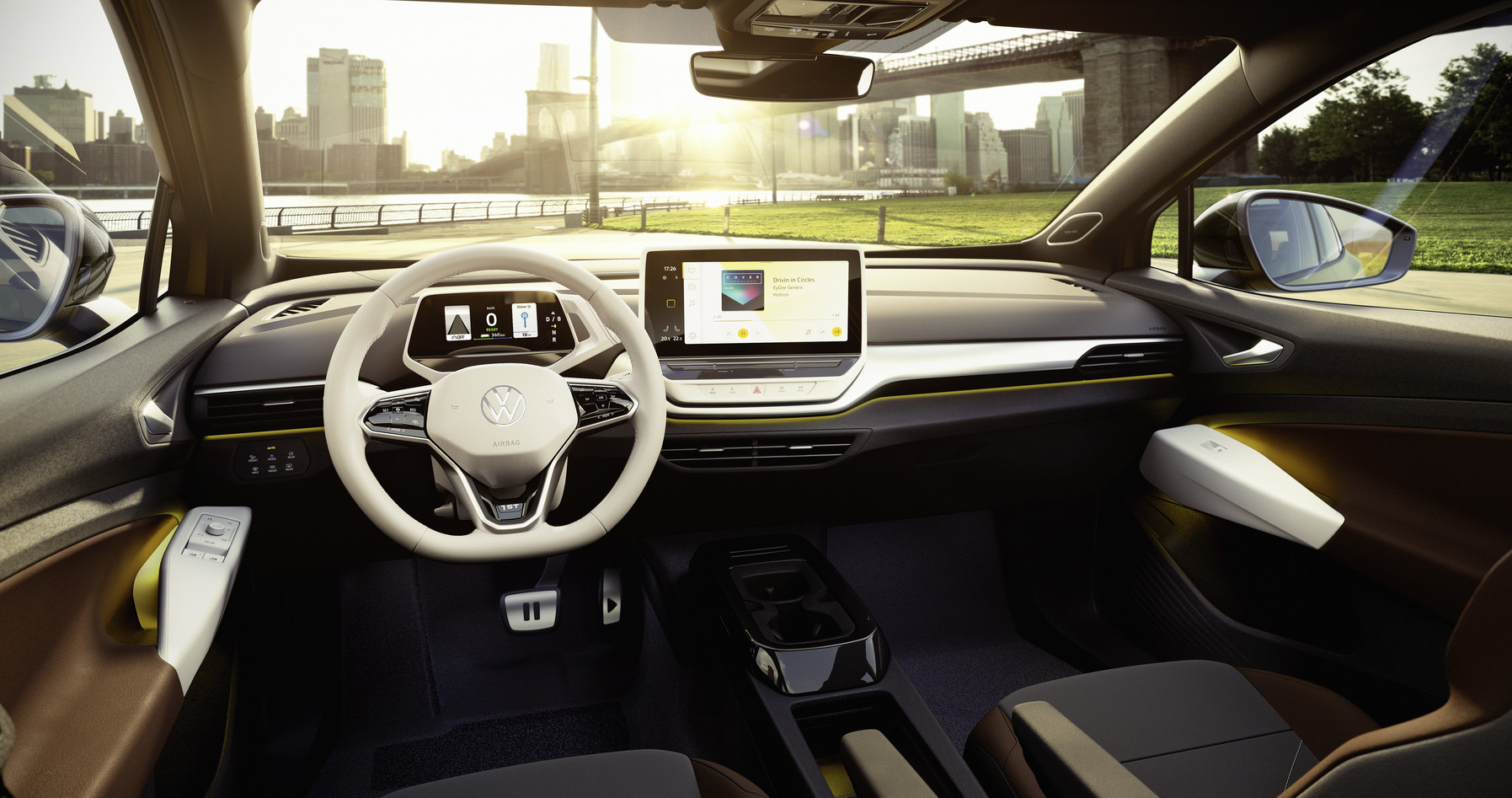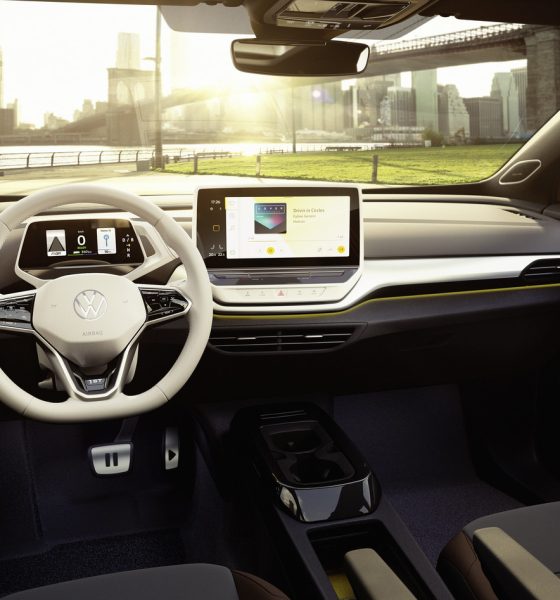

News
Anti-Tesla strategy bites VW’s China division as local customers lament laggy ID.4 software
It is normal for automakers to throw shade over their competition every so often. Elon Musk does this himself, poking fun at the Audi e-tron’s name or the fact that competitors’ specs are still comparable to Tesla’s original Model S. Volkswagen’s China division has done the same thing, with the local branch of the German automaker targeting Tesla during the debut and delivery event of the ID.4 in the country.
VW China did not waste any time throwing some good old-fashioned shade towards Tesla, highlighting several points of criticism against the company in the ID. 4’s local debut. Volkswagen China mentioned Tesla’s inconsistent pricing, the Model 3 and Model Y’s lack of a front instrument cluster, uncomfortable seats, and unfriendly UI (among many) while promoting the ID.4.
Volkswagen followed this up with an aggressive push of the ID.4 in the local market, with some social media users posting images of Volkswagen booths being placed strategically in front of Tesla’s local stores. It’s a bold move and one which suggests that the German automaker is serious about its EV push in China. These efforts paid off to some degree, with VW China selling 1,267 ID.4 Crozz SUVs between January and May.
Being a veteran of the electric vehicle market, Tesla is familiar with how vocal electric car owners could be when it comes to issues about their EVs. This is something that is currently being experienced by Volkswagen’s China division, as a growing number of ID.4 owners are starting to share their experiences about the all-electric crossover’s software issues in social media.
One owner, who complained that he could not even turn on his ID. 4’s air conditioning feature because of its laggy software, ended up physically hitting the vehicle’s infotainment display out of frustration. The ID.4 owner shared a clip that was over 20 seconds long, and over the entire time, the vehicle’s software was just loading. Considering how dependent the vehicle’s features are on its infotainment system, the VW owner’s frustration was quite understandable.
This is not to say that Tesla’s software is perfect, of course. Several Tesla owners have mentioned that their vehicles’ PIN to Drive function usually results in a slow user experience, which is pretty annoying on its own. Teslas with older hardware also tend to have slower infotainment systems as the vehicle ages. This point makes the frustration of China’s ID.4 owners even more notable, however. After all, if a brand new vehicle already features laggy software, it would be hard to imagine just how slow the system would be a few years down the road.
It should be noted that Tesla and Volkswagen’s leadership have a pretty good relationship, with CEO Elon Musk and VW boss Herbert Diess having engaged in numerous friendly interactions in the past. Both executives have also defended the other against media criticism. Musk and Diess even took a short test drive of the Volkswagen ID.3, which involved the Tesla CEO flooring the vehicle in an attempt to get it to move faster while the VW boss explained that the all-electric hatchback was not a high-performance car.
Don’t hesitate to contact us for news tips. Just send a message to tips@teslarati.com to give us a heads up.

News
Tesla FSD fleet is nearing 7 billion total miles, including 2.5 billion city miles
As can be seen on Tesla’s official FSD webpage, vehicles equipped with the system have now navigated over 6.99 billion miles.

Tesla’s Full Self-Driving (Supervised) fleet is closing in on almost 7 billion total miles driven, as per data posted by the company on its official FSD webpage.
These figures hint at the massive scale of data fueling Tesla’s rapid FSD improvements, which have been quite notable as of late.
FSD mileage milestones
As can be seen on Tesla’s official FSD webpage, vehicles equipped with the system have now navigated over 6.99 billion miles. Tesla owner and avid FSD tester Whole Mars Catalog also shared a screenshot indicating that from the nearly 7 billion miles traveled by the FSD fleet, more than 2.5 billion miles were driven inside cities.
City miles are particularly valuable for complex urban scenarios like unprotected turns, pedestrian interactions, and traffic lights. This is also the difference-maker for FSD, as only complex solutions, such as Waymo’s self-driving taxis, operate similarly on inner-city streets. And even then, incidents such as the San Francisco blackouts have proven challenging for sensor-rich vehicles like Waymos.
Tesla’s data edge
Tesla has a number of advantages in the autonomous vehicle sector, one of which is the size of its fleet and the number of vehicles training FSD on real-world roads. Tesla’s nearly 7 billion FSD miles then allow the company to roll out updates that make its vehicles behave like they are being driven by experienced drivers, even if they are operating on their own.
So notable are Tesla’s improvements to FSD that NVIDIA Director of Robotics Jim Fan, after experiencing FSD v14, noted that the system is the first AI that passes what he described as a “Physical Turing Test.”
“Despite knowing exactly how robot learning works, I still find it magical watching the steering wheel turn by itself. First it feels surreal, next it becomes routine. Then, like the smartphone, taking it away actively hurts. This is how humanity gets rewired and glued to god-like technologies,” Fan wrote in a post on X.
News
Tesla starts showing how FSD will change lives in Europe
Local officials tested the system on narrow country roads and were impressed by FSD’s smooth, human-like driving, with some calling the service a game-changer for everyday life in areas that are far from urban centers.

Tesla has launched Europe’s first public shuttle service using Full Self-Driving (Supervised) in the rural Eifelkreis Bitburg-Prüm region of Germany, demonstrating how the technology can restore independence and mobility for people who struggle with limited transport options.
Local officials tested the system on narrow country roads and were impressed by FSD’s smooth, human-like driving, with some calling the service a game-changer for everyday life in areas that are far from urban centers.
Officials see real impact on rural residents
Arzfeld Mayor Johannes Kuhl and District Administrator Andreas Kruppert personally tested the Tesla shuttle service. This allowed them to see just how well FSD navigated winding lanes and rural roads confidently. Kruppert said, “Autonomous driving sounds like science fiction to many, but we simply see here that it works totally well in rural regions too.” Kuhl, for his part, also noted that FSD “feels like a very experienced driver.”
The pilot complements the area’s “Citizen Bus” program, which provides on-demand rides for elderly residents who can no longer drive themselves. Tesla Europe shared a video of a demonstration of the service, highlighting how FSD gives people their freedom back, even in places where public transport is not as prevalent.
What the Ministry for Economic Affairs and Transport says
Rhineland-Palatinate’s Minister Daniela Schmitt supported the project, praising the collaboration that made this “first of its kind in Europe” possible. As per the ministry, the rural rollout for the service shows FSD’s potential beyond major cities, and it delivers tangible benefits like grocery runs, doctor visits, and social connections for isolated residents.
“Reliable and flexible mobility is especially vital in rural areas. With the launch of a shuttle service using self-driving vehicles (FSD supervised) by Tesla in the Eifelkreis Bitburg-Prüm, an innovative pilot project is now getting underway that complements local community bus services. It is the first project of its kind in Europe.
“The result is a real gain for rural mobility: greater accessibility, more flexibility and tangible benefits for everyday life. A strong signal for innovation, cooperation and future-oriented mobility beyond urban centers,” the ministry wrote in a LinkedIn post.
News
Tesla China quietly posts Robotaxi-related job listing
Tesla China is currently seeking a Low Voltage Electrical Engineer to work on circuit board design for the company’s autonomous vehicles.

Tesla has posted a new job listing in Shanghai explicitly tied to its Robotaxi program, fueling speculation that the company is preparing to launch its dedicated autonomous ride-hailing service in China.
As noted in the listing, Tesla China is currently seeking a Low Voltage Electrical Engineer to work on circuit board design for the company’s autonomous vehicles.
Robotaxi-specific role
The listing, which was shared on social media platform X by industry watcher @tslaming, suggested that Tesla China is looking to fill the role urgently. The job listing itself specifically mentions that the person hired for the role will be working on the Low Voltage Hardware team, which would design the circuit boards that would serve as the nervous system of the Robotaxi.
Key tasks for the role, as indicated in the job listing, include collaboration with PCB layout, firmware, mechanical, program management, and validation teams, among other responsibilities. The role is based in Shanghai.
China Robotaxi launch
China represents a massive potential market for robotaxis, with its dense urban centers and supportive policies in select cities. Tesla has limited permission to roll out FSD in the country, though despite this, its vehicles have been hailed as among the best in the market when it comes to autonomous features. So far, at least, it appears that China supports Tesla’s FSD and Robotaxi rollout.
This was hinted at in November, when Tesla brought the Cybercab to the 8th China International Import Expo (CIIE) in Shanghai, marking the first time that the autonomous two-seater was brought to the Asia-Pacific region. The vehicle, despite not having a release date in China, received a significant amount of interest among the event’s attendees.








